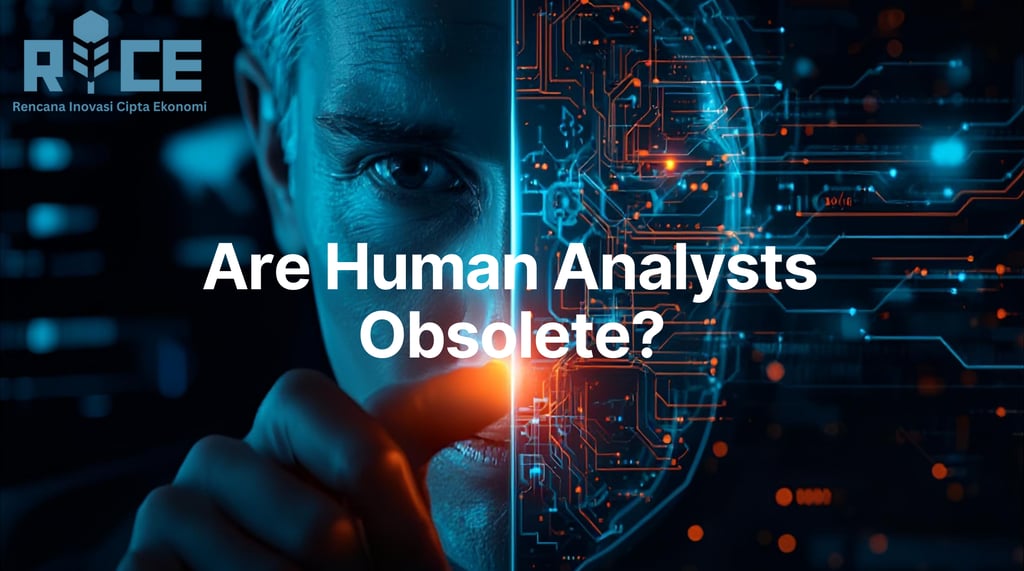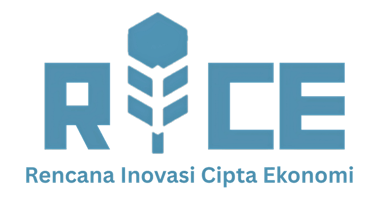Are Human Analysts Obsolete? Debunking the AI Supremacy Myth in Threat Intelligence
Debunking the myth: AI augments, not replaces, human threat analysts.
TECHNOLOGY
Rice AI (Ratna)
10/24/202511 min read


The rapid advancements in Artificial Intelligence (AI) have sparked a pervasive concern across numerous industries: the fear of human job displacement. In the critical realm of cybersecurity and threat intelligence, this anxiety often manifests as the question: will AI render human analysts obsolete? This isn't just a theoretical debate; it’s a practical challenge facing security operations centers (SOCs) worldwide. Many believe AI’s superior processing speed and pattern recognition capabilities are quickly making human contributions redundant. However, this perspective overlooks a fundamental truth.
The notion that AI will entirely replace the human element in threat intelligence is a pervasive myth. While AI undeniably revolutionizes our capacity to detect and respond to cyber threats, it serves as a powerful augmentation, not a wholesale replacement, for human expertise. Effective threat intelligence today, and in the foreseeable future, hinges on a sophisticated synergy between cutting-edge AI technologies and the irreplaceable cognitive strengths of human analysts. This article will debunk the myth of AI supremacy, revealing why human analysts remain vital and how their collaboration with AI forms the most robust defense against an ever-evolving threat landscape.
The Ascendancy of AI in Threat Detection
AI and Machine Learning (ML) have ushered in a new era for threat intelligence, dramatically enhancing the speed and scale at which security teams can operate. AI systems excel at processing colossal volumes of data from diverse sources – network logs, endpoint telemetry, vulnerability databases, and global threat feeds – far beyond human capacity. This ability allows for the rapid identification of indicators of compromise (IOCs) and sophisticated attack patterns that might otherwise be missed.
Machine learning algorithms are adept at uncovering subtle anomalies and predicting potential threats based on historical data. They can rapidly sift through millions of security events to pinpoint suspicious activities, reducing alert fatigue for human analysts. This predictive capability allows organizations to move from a reactive to a more proactive security posture. Tools powered by AI can automate repetitive tasks such as initial alert triage, malware analysis, and vulnerability scanning, freeing up valuable human analyst time.
AI's Superpowers: Speed, Scale, and Pattern Recognition
AI's most celebrated attributes in threat intelligence are its unparalleled speed and scale. A human analyst might spend hours manually correlating data points from disparate systems, whereas an AI system can perform this task in milliseconds across an entire network. This rapid analysis is crucial in a threat landscape where attackers often operate at machine speed. AI can continuously monitor network traffic, user behavior, and system processes, identifying deviations from established baselines indicative of malicious activity.
Furthermore, AI's ability to discern complex patterns within massive datasets is transformative. These patterns might be too intricate or subtle for human observation, involving relationships across numerous variables over extended periods. For instance, AI can detect low-and-slow attacks, insider threats, or advanced persistent threats (APTs) that meticulously blend into normal network operations. This capability significantly broadens the scope of threat detection, providing a foundational layer of defense that is increasingly difficult to circumvent.
The Indispensable Human Element: Beyond Automation
Despite AI's impressive capabilities, the human analyst remains the cornerstone of effective threat intelligence. Humans possess cognitive abilities that AI currently cannot replicate, particularly in areas requiring nuanced understanding, strategic thinking, and ethical judgment. The idea of AI completely taking over assumes a level of artificial general intelligence (AGI) that is still firmly in the realm of science fiction.
Human analysts bring critical thinking, intuition, and an understanding of geopolitical and socio-economic contexts to the table. These attributes are essential for interpreting ambiguous data, discerning attacker motives, and formulating effective countermeasures. A raw alert from an AI system gains true meaning only when a human analyst applies their experience and contextual knowledge.
Unpacking Nuance and Intent
One of the most significant differentiators for human analysts is their capacity to understand nuance and intent. AI operates on algorithms and predefined rules, identifying anomalies based on statistical probabilities. However, cybersecurity threats often involve human deception, social engineering, and highly adaptive strategies that defy simple categorization. An AI might flag an unusual file transfer, but only a human analyst can determine if it's a legitimate, albeit irregular, business operation, a careless employee, or a sophisticated exfiltration attempt.
Understanding the "why" behind an attack—the attacker's motivation, targets, and strategic goals—is a uniquely human skill. This involves piecing together fragments of information, drawing on psychological insights, and understanding the broader geopolitical landscape. This deeper context is vital for not only responding to current threats but also predicting future attack vectors and developing resilient long-term security strategies. Without this human insight, AI-driven alerts can lead to an overwhelming number of false positives or, worse, misinterpretations that expose an organization to greater risk.
Strategic Thinking and Creative Problem Solving
The most complex cyberattacks often require creative, out-of-the-box thinking to unravel and mitigate. Attackers constantly innovate, developing novel techniques that AI systems, trained on past data, may not immediately recognize. It is the human analyst who can connect disparate pieces of information, hypothesize new attack methods, and devise innovative defensive strategies against previously unseen threats (zero-day exploits). This involves abstract reasoning, understanding systemic vulnerabilities, and thinking like an adversary.
Strategic thinking extends beyond immediate incident response to long-term security planning. Human analysts are crucial in developing comprehensive threat models, assessing organizational risk profiles, and advising on strategic investments in security infrastructure. They understand the business context, regulatory compliance requirements, and potential impact of cyber incidents on an organization's reputation and bottom line. These strategic insights cannot be automated; they require human judgment and foresight.
The Synergy: Human-AI Teaming for Enhanced Security
The most effective approach to modern threat intelligence isn't an "either/or" choice between humans and AI, but a powerful "both/and" strategy. When integrated thoughtfully, AI and human analysts form a formidable team, each compensating for the other's weaknesses and amplifying strengths. This collaborative model is where the future of cybersecurity truly lies, ensuring comprehensive coverage and rapid, intelligent response.
AI handles the data volume, speed, and initial pattern recognition, serving as an intelligent filter that brings the most critical and complex issues to human attention. Human analysts then apply their expertise to these filtered alerts, providing the critical context, intuition, and strategic thinking required for true intelligence and decisive action. This partnership allows security teams to elevate their capabilities, moving beyond reactive firefighting to proactive threat hunting and strategic defense. Organizations leveraging this synergy are better equipped to face the sophisticated threats of today.
Optimizing SOC Operations with AI Augmentation
The modern Security Operations Center (SOC) faces immense pressure from an ever-increasing volume of alerts and a persistent shortage of skilled cybersecurity professionals. AI serves as a force multiplier, optimizing SOC operations by automating routine tasks and accelerating critical processes. By offloading mundane data correlation and initial triage to AI, human analysts are freed to focus on high-value activities that require their unique cognitive skills. This includes complex incident investigation, threat hunting, and the development of proactive security strategies.
Consider the initial stages of an incident response: AI can rapidly analyze alert data, enrich it with contextual information from various sources (e.g., reputation services, vulnerability databases), and even suggest potential response actions. This significantly reduces the mean time to detect (MTTD) and mean time to respond (MTTR) to threats. The Rice AI platform exemplifies this synergistic approach, empowering security professionals to cut through the noise with advanced AI-driven analytics. Our solutions ingest vast amounts of data, identify critical anomalies with high precision, and present actionable insights in an intuitive format, allowing human analysts to make informed decisions faster and with greater confidence. This is not about replacing analysts; it's about making them more efficient, more strategic, and ultimately, more effective in protecting their organizations.
Elevating Threat Hunting and Intelligence Gathering
AI significantly enhances threat hunting initiatives by identifying subtle indicators that might escape human notice. By continuously analyzing network behavior and historical data, AI can surface anomalous patterns that suggest the presence of stealthy attackers. This allows human threat hunters to pivot their investigations from known threats to emerging and sophisticated campaigns. AI-driven platforms can present these findings with visualizations and contextual data, enabling analysts to quickly understand the scope and potential impact of a threat.
Moreover, AI accelerates intelligence gathering by automatically processing and correlating information from open-source intelligence (OSINT), dark web forums, and vulnerability disclosures. It can identify emerging attack trends, new malware variants, and adversary tactics, techniques, and procedures (TTPs). This raw intelligence is then refined by human analysts who interpret its significance, filter out irrelevant noise, and integrate it into their organizational threat models. The combination of AI's data processing power and human strategic insight transforms raw data into actionable threat intelligence, providing a clearer picture of the evolving threat landscape. Rice AI provides unparalleled capabilities in this domain, offering a robust platform for real-time threat detection and contextual analysis, which drastically reduces the burden on human teams while amplifying their investigative prowess. Our AI models are continually learning, ensuring that analysts always have the most current insights at their fingertips, transforming reactive defense into proactive security orchestration.
Beyond Automation: AI's Limitations and Human Oversight
While AI offers profound benefits, it is not without limitations. Acknowledging these shortcomings is crucial to understanding why human oversight and intervention remain indispensable. AI systems, particularly those relying on machine learning, are inherently dependent on the data they are trained on. This dependency introduces potential vulnerabilities and biases that only human scrutiny can effectively address.
The cybersecurity landscape is constantly shifting, with attackers continually devising new methods. AI's reliance on historical data can be a significant drawback when confronted with zero-day exploits or novel attack vectors. Human analysts, with their capacity for abstract thought and creative problem-solving, are uniquely positioned to recognize and respond to these unprecedented threats. This highlights that AI is a tool, albeit a powerful one, that requires intelligent human guidance to be truly effective.
Bias, Explainability, and Adversarial AI
One critical limitation of AI is its susceptibility to bias. If the training data contains inherent biases or reflects past inequalities, the AI system will perpetuate and even amplify those biases in its decisions. In cybersecurity, this could lead to misidentifying legitimate activities as malicious or overlooking actual threats, creating blind spots in defense. Human analysts are necessary to audit AI's decisions, identify potential biases, and ensure fairness and accuracy.
Another challenge is "explainability." Many advanced AI models, particularly deep learning networks, operate as "black boxes," making it difficult for humans to understand how they arrived at a particular conclusion. In a high-stakes field like cybersecurity, where an incorrect decision can have catastrophic consequences, understanding the rationale behind an AI alert is paramount. Human analysts need to be able to interrogate the AI's findings, validate its logic, and ultimately take responsibility for the actions taken.
Furthermore, AI itself can be a target and a weapon. Adversarial AI involves attackers manipulating input data to trick AI models into misclassifying threats or even generating false negatives. This emerging threat underscores the need for human intelligence to anticipate, detect, and counteract such sophisticated attacks. Only human ingenuity can effectively combat the creative malice of an intelligent adversary.
Adapting to Novel Threats and Unforeseen Scenarios
The dynamic nature of the cyber threat landscape means that new attack techniques, malware families, and vulnerability exploits emerge daily. AI systems are typically trained on vast datasets of known threats and patterns. While they can generalize to some extent, they struggle significantly with genuinely novel, zero-day attacks that have no precedent in their training data. This is where human analysts truly shine. Their ability to reason from first principles, understand fundamental system vulnerabilities, and apply deductive logic allows them to analyze and respond to threats that AI has never encountered.
Consider a scenario where an attacker exploits a completely new vulnerability in a widely used software. An AI system might initially see unusual activity but lack the context or conceptual framework to identify it as a critical exploit. A human analyst, however, can leverage their deep understanding of systems architecture, networking protocols, and attacker methodologies to connect the dots, identify the novel attack, and devise immediate countermeasures. This adaptive capacity and ability to handle "unknown unknowns" is a testament to the enduring value of human expertise in threat intelligence.
Future-Proofing Your Security Operations: Adopting the Hybrid Model
The future of threat intelligence is not a competition but a collaboration. Organizations that successfully integrate AI into their security operations, while simultaneously investing in their human talent, will be the most resilient against future cyber threats. This "hybrid model" ensures that the strengths of both AI and human analysts are leveraged to their fullest potential, creating a security posture that is both efficient and intelligent.
Future-proofing involves not just adopting new technologies but also rethinking organizational structures, fostering continuous learning, and creating a culture of innovation. The goal is to build adaptive, intelligent security teams that can evolve as rapidly as the threats they face. The key takeaway is clear: human analysts are not obsolete; they are more critical than ever, empowered and elevated by the intelligent tools at their disposal.
Investing in Human Capital and Continuous Learning
In this evolving landscape, investing in human capital is paramount. It means providing cybersecurity professionals with continuous training in both AI technologies and advanced analytical skills. Analysts need to understand how AI systems work, their capabilities, and their limitations, enabling them to effectively interpret AI-generated insights and troubleshoot when necessary. This upskilling ensures that humans can effectively partner with AI, rather than simply being passive recipients of its output. Training should also focus on critical thinking, threat modeling, and strategic incident response, sharpening the uniquely human skills that AI cannot replicate.
Moreover, fostering a culture of continuous learning within security teams is crucial. The threat landscape and technological advancements move at an incredible pace. Regular workshops, certifications, and access to cutting-edge research ensure that human analysts remain at the forefront of cybersecurity knowledge. This ongoing investment in human expertise ensures that organizations have adaptable, highly skilled professionals capable of navigating complex challenges and innovating new defense strategies.
Strategic AI Integration and Workflow Redesign
Effective AI integration requires more than just deploying new tools; it demands a strategic rethinking of existing security workflows. Organizations must identify areas where AI can automate mundane, repetitive tasks, thereby streamlining operations and allowing human analysts to focus on higher-level analytical work. This means mapping current processes, identifying bottlenecks, and strategically deploying AI solutions to enhance efficiency without sacrificing accuracy or control. The goal is to augment, not replace, human capabilities.
Furthermore, the integration process should prioritize transparency and explainability. Security teams need AI tools that provide clear insights into their decision-making processes, enabling analysts to understand and validate findings. This ensures trust in the AI's output and facilitates effective collaboration. By designing workflows that seamlessly blend AI-driven automation with human oversight and decision-making, organizations can create a truly resilient and intelligent threat intelligence operation. Rice AI is committed to this philosophy, designing solutions that not only leverage the most advanced AI but also provide intuitive interfaces and explainable AI insights, ensuring seamless integration into your existing SOC framework and empowering your analysts to achieve more.
Cultivating the Next Generation of Cyber Talent
The future success of threat intelligence relies on cultivating a new generation of cyber professionals who are proficient in both traditional security principles and AI technologies. Educational institutions and industry leaders must collaborate to develop curricula that equip students with the necessary interdisciplinary skills. This includes a strong foundation in computer science, networking, and security, combined with expertise in machine learning, data science, and AI ethics. These hybrid professionals will be adept at building, deploying, and managing AI-driven security tools, as well as applying critical human judgment to complex cyber scenarios.
Mentorship programs and hands-on experience with AI in real-world security environments are also vital. By providing opportunities for aspiring analysts to work alongside experienced professionals and cutting-edge AI platforms, organizations can nurture the talent required to lead future threat intelligence efforts. This forward-looking approach ensures a robust pipeline of skilled individuals ready to embrace the evolving demands of cybersecurity, reinforcing the synergistic relationship between human ingenuity and artificial intelligence.
Conclusion
The question of whether human analysts are obsolete is based on a fundamental misunderstanding of AI's current capabilities and purpose in threat intelligence. While AI brings unprecedented speed, scale, and pattern recognition to the cybersecurity domain, it does not possess the cognitive agility, contextual understanding, intuition, or strategic thinking unique to human analysts. The most robust security posture is achieved through a powerful synergy: AI handles the heavy lifting of data processing and initial detection, while human experts provide the critical judgment, nuance, and creative problem-solving necessary to truly understand and counteract sophisticated cyber threats.
Embracing this hybrid model is not just about leveraging technology; it's about optimizing human potential. By offloading repetitive tasks to AI, human analysts are empowered to focus on complex investigations, proactive threat hunting, and strategic defense planning. This collaboration elevates the entire security operation, making it more efficient, intelligent, and adaptable. So, are human analysts obsolete? Far from it. They are more vital than ever, serving as the indispensable architects and interpreters in a landscape increasingly augmented by artificial intelligence.
Ready to empower your human analysts with cutting-edge AI? Discover how Rice AI's intelligent threat intelligence solutions can transform your security operations, enabling your team to detect, analyze, and respond to threats with unparalleled precision and efficiency.
#Cybersecurity #ThreatIntelligence #AIinCybersecurity #HumanAnalysts #AIandHumans #SecurityOperations #CyberDefense #MachineLearning #FutureOfSecurity #Infosec #CyberAnalyst #RiceAI #DigitalSecurity #AIRevolution #CyberWarfare #DailyAITechnology
RICE AI Consultant
To be the most trusted partner in digital transformation and AI innovation, helping organizations grow sustainably and create a better future.
Connect with us
Email: consultant@riceai.net
+62 822-2154-2090 (Marketing)
© 2025. All rights reserved.


+62 851-1748-1134 (Office)
IG: @riceai.consultant
